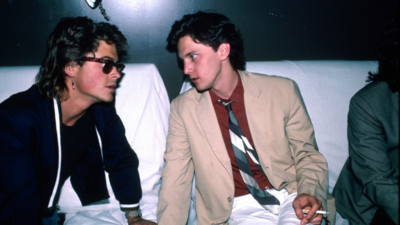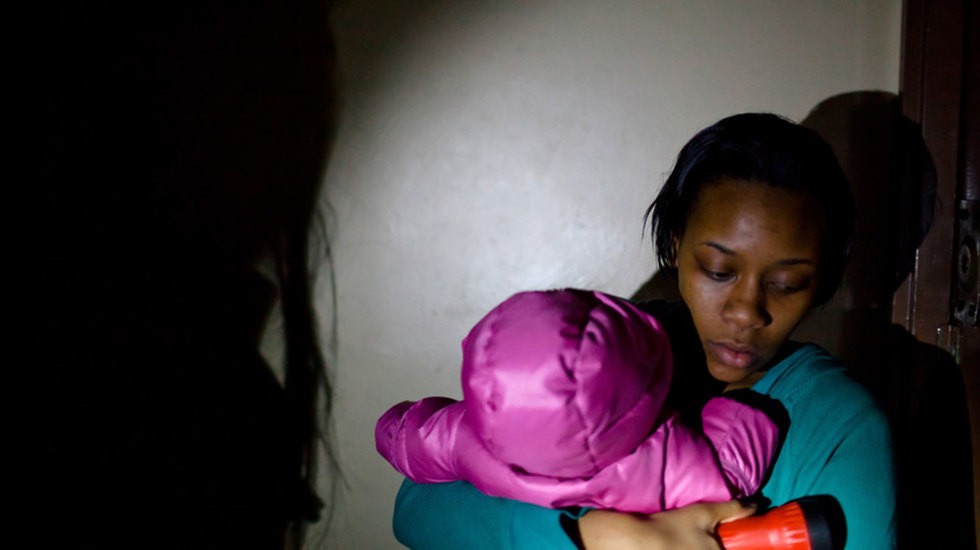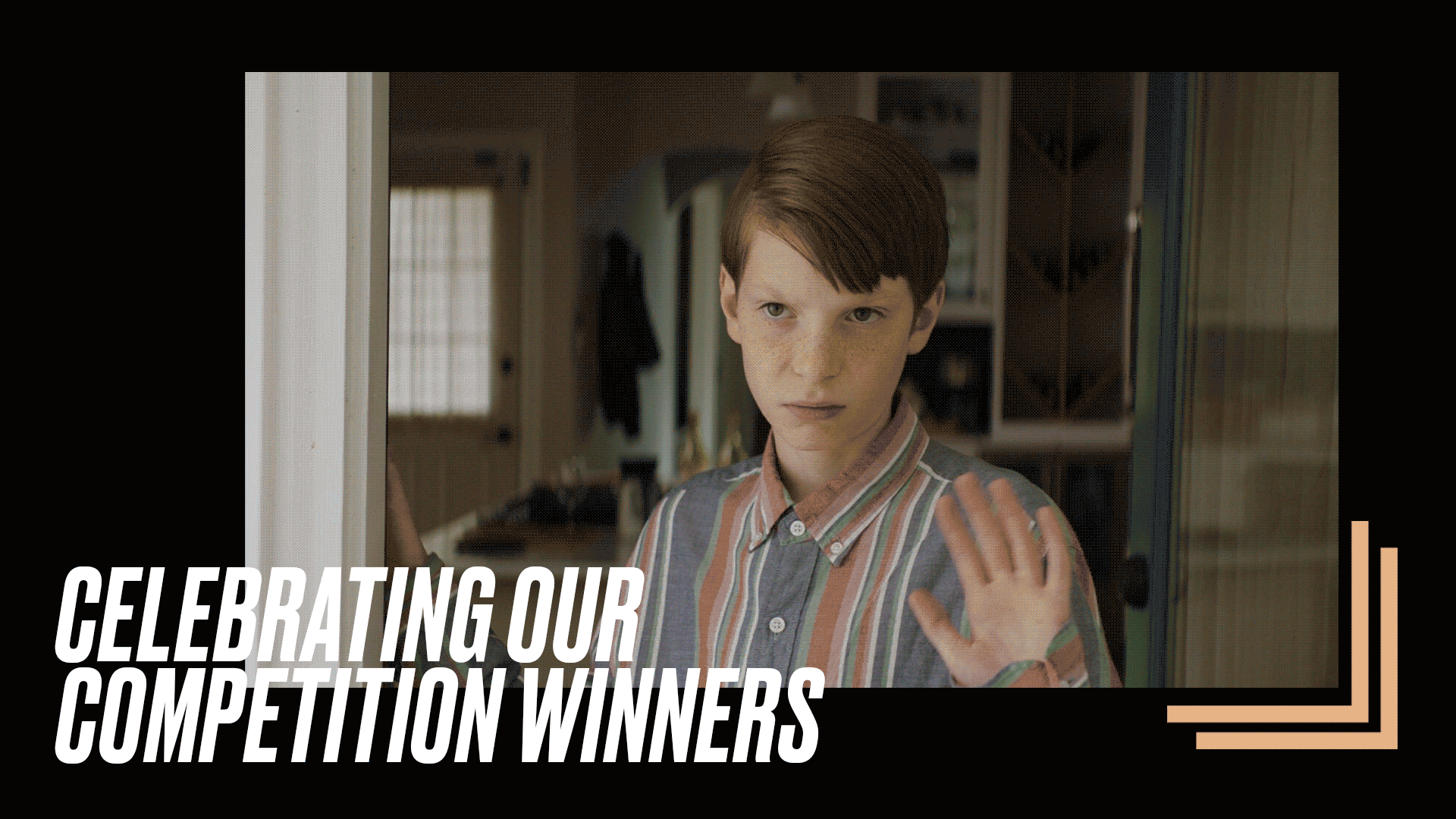
BY KAREN KEMMERLE |
Laura Gottesdiener and Rachel Falcone on Sandy Storyline
Even seven months later, victims of Hurricane Sandy are still reeling from the effects of the storm. The team behind ‘Sandy Storyline' allows those parties to share their ordeals through written stories, photos, audio recordings and videos.

Our inaugural Storyscapes program, created in collaboration with Bombay Sapphire®, celebrates new trends in digital media and the filmmakers and content creators who employ interactive, web-based or cross-platform approaches to story creation. Laura Gottesdiener, Rachel Falcone and the rest of their team are dedicated to collecting the stories in their own words of those hit hardest by Hurricane Sandy.
Tribeca: Tell us a little bit about Sandy Storyline. What inspired you to reach out to Sandy survivors to make a documentary?
Laura Gottesdiener and Rachel Falcone: Many of the creators of Sandy Storyline were involved in the immediate relief and recovery work following Hurricane Sandy. As we volunteered to help distribute goods, set up kitchens, and assess the community needs, we realized that the impacts of the storm were vast and devastating. From our activism and documentation work on Hurricane Katrina and the ensuing housing crisis, we knew that the Sandy disaster would provide an opportunity for the city to be reshaped—physically, economically and politically.
We began this documentary, therefore, to help construct a narrative about the storm that focuses on and prioritizes the needs and desires of the current community. We hope this project will help contribute to a reconstruction process that is democratic and inclusive and that helps address entrenched problems, including economic inequality and climate change.

Tribeca: Back in October of 2012, Hurricane Sandy devastated the east coast (including NYC) and the Caribbean. Why is it important that Hurricane Sandy remains in the Global consciousness?
LG and RF: The effects of the storm are very much still present across the region. Thousands of families remain displaced. Businesses and medical clinics have not reopened; food security and long-term health impacts are serious concerns for many of the coastal communities. People are nervous about the water supply, about sanitation issues. Tens of thousands of people are waiting on insurance payments. These are just a few of the individual concerns that are affecting hundreds of thousands of people across the region.
But more broadly, Hurricane Sandy was a pivotal moment that shifted the national conversation about climate change. For the first time, we saw broad recognition that climate change is real and the stirrings of the social and political movement that will be required to address this serious issue. Keeping Hurricane Sandy in the global consciousness is important, therefore, both to ensure that people across the devastated communities receive the long-term support that they need, and to continue the movement for environmental change that will prevent future disasters.
Tribeca: Sandy Storyline is defined as a “participatory documentary.” Can you define this new category for our audience?
LG and RF: A participatory documentary is one that welcomes everyone to contribute content—written stories, photos, audio recordings and videos—to the growing documentary. Rather than having the narrative determined by a small team of professionals, we are creating a platform for hundreds of community-generated storylines to live and interact.
We hope that the storytelling is not only cathartic but empowering for people affected by the storm.
Tribeca: Many people lost everything in Hurricane Sandy—did the victims find that telling their stories was therapeutic? Have participants said as much?
LG and RF: We’ve been most excited to see that people who were affected by Hurricane Sandy are not only sharing their stories, but getting involved in the coordination and educational aspects of the project. We hope that the storytelling is not only cathartic but empowering for people affected by the storm—and we’re honored when the experience has spurred people to take action and become leaders of their communities.
Tribeca: Sandy Storyline is unique in its use of storyteller for much of the content of the documentary—people can share their stories by email, by photography, by telephone or by in-person interviews. What was the most popular method and was that the most effective?
LG and RF: We’ve found that different channels of participation have worked for different people. For those without electricity after the storm, the text and phone-line options were very useful. Since power has been restored across the region, we have seen an increase in online contributions. We’ve also seen very close bonds being formed between our collective of media makers and some of the community members who wanted to do in-person interviews.

Tribeca: Sandy Storyline offers education programs for both youth and adults. How important is community and teaching to the success of the documentary?
LG and RF: These education programs have allowed us to include voices that are generally ignored in mainstream media, particularly the stories and opinions of young adults. In this project, we’re committed to using storytelling and media creation not only to document what is happening, but also to build leadership and community power to impact what happens in the future. So we’ve been honored to be invited by schools and community groups, such as the Coney Island Generation Gap and the Hudson School in Hoboken, N.J., to organize media trainings and workshops in affected neighborhoods.
Tribeca: What can Festival audiences expect from Sandy Storyline’s installation? Will they be able to share their own stories?
LG and RF: Tribeca festival audiences will experience an immersive exhibition that highlights the human impact—the voices and faces and stories—of Hurricane Sandy. And yes, we will be inviting visitors to share their own stories, using the open-source texting technology developed by MIT Center for Civic Media.
We knew that the Sandy disaster would provide an opportunity for the city to be reshaped.
Tribeca: What are you most looking forward to at Tribeca?
LG and RF: We’re very excited to experience the other exhibitions in the Storyscapes category and as many films as we have time to see!
Tribeca: What does the word “Transmedia” mean to you?
LG and RF: Transmedia, to us, is an emerging genre of storytelling—one that interacts on various platforms and has both digital and human elements. Mostly, we’ve found that transmedia is hard to define in words. So instead we’re building an example of what it can be through this project.
From April 19 - April 21, Sandy Storyline, along with our other four Storyscapes selections, will be featured in a public, interactive installation at the Bombay Sapphire® House of Imagination (121 Varick Street, 7th Floor).

